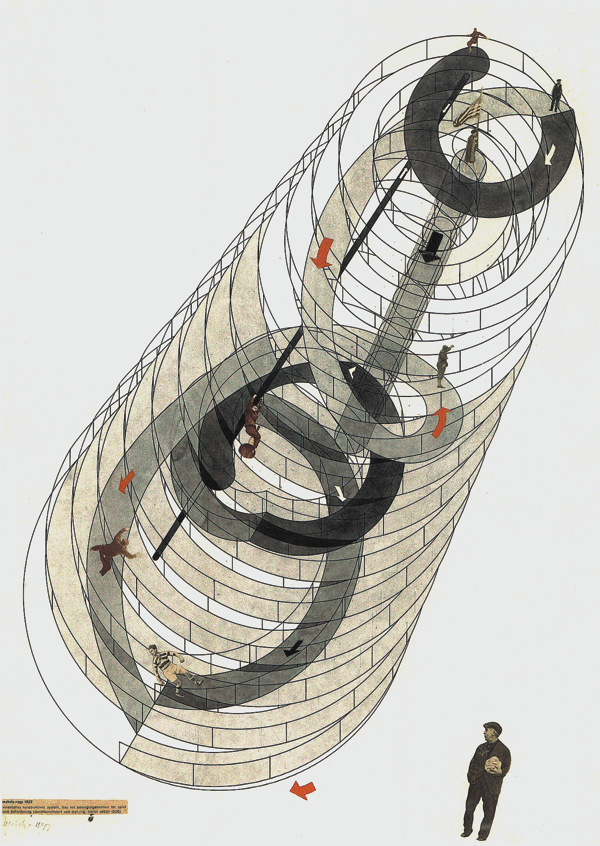LÃĄszlÃģ Moholy-Nagy Retrospective
Schirn, Frankfurt, October 8th, 2009â February 7th, 2010

Kinetic-constructive system, 1922
True to the interferences of avant-garde in BerlinâViennaâBudapest, the exhibition in Frankfurt presents 170 objects dâart including experimental works and suppletory documents based on which contemporary photography, film and theatre art, plastic art, painting an typography would not be the same. The majority of Gesamtkunstwerk demos and creations by Moholy-Nagy rated now as media works appear to be futuristic ones even today. From among the works first presented in the 1920s, TelefonkÃĐp (âTelephone Imageâ, 1922) is an outsanding one being a geometric painting by Moholy-Nagy made in an enamel factory, the parametres of which were given by the painter via telephone based on a studio sketch. This work of his heralded todayâs parametric architecture and CAD-based practice. FÃĐnyjÃĄtÃĐk (âLightplayâ) from the 1930s and the âschwarz-weiss-grauâ graphemes elevated as icons in the film-montage herald the concept art of the 1970s and â because he wrote the text on transparent pneu-balloon sculptures â preceeds the neo-avantgarde architectural world of Coop Himmelb(l)au by half a century.
The exhibition evokes the stage ambitions of Moholy-Nagy with an unprecedented profusion. Enigmatic even today, the score-folded leaflet titled PartitÚra-skicc (âMusical Score Sketchâ, 1924) has been influencing contemporary music for 85 years now, as well as the neo-avantgarde spectacle theatre more recently. Including spiral chutes, the stage design titled Kinetikus-konstruktÃv szisztÃĐma (âKinetic-Constructive Systemâ, 1922â30) approaching theatre practice, with yet non-existing volleying point-pullers Moholy-Nagy may have envisioned the genre of todayâs theatre-circus amalgamated with street art. Anyway, the scenes of public domain and extreme optic angle exerted influence on Moholy-Nagy as a documentary maker and photographer. However, his photograms born in a closed laboratory are almost prototypes of todayâs computer-aided image-manipulation. In room No. 3 there are works from the period between 1930 and 1945 on display representing experimental sculptures, coloured photograms and his late ânuclearâ paintings. Composed with a light-modulator and projection room, this space of 60 square metres summarizes what architecture, design, photography and theatre art back in those days had known about the future in a tangible way, just like a kind of time-machine.
GyÃķrgy SzegÅ

The Tales of Hoffmann, 1929

Telephone painting EM1, 1922

Outside the studio, 1928 kÃķrÞl
